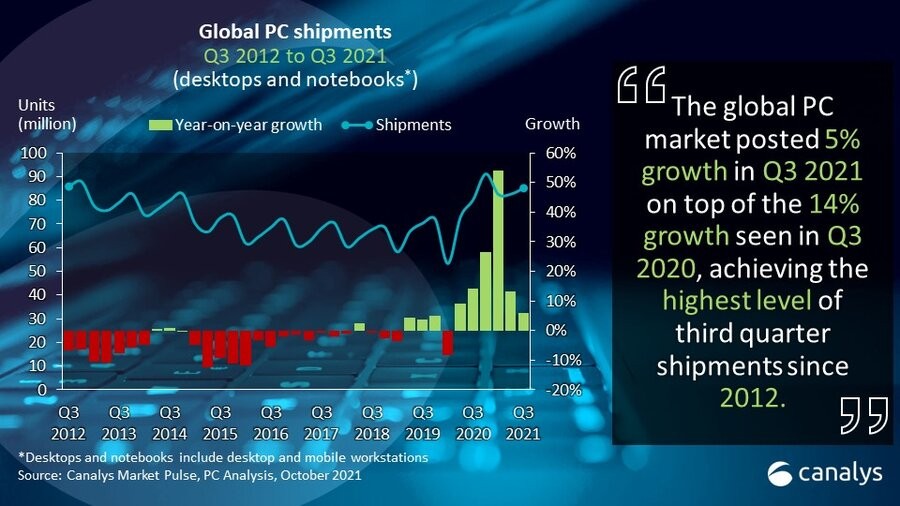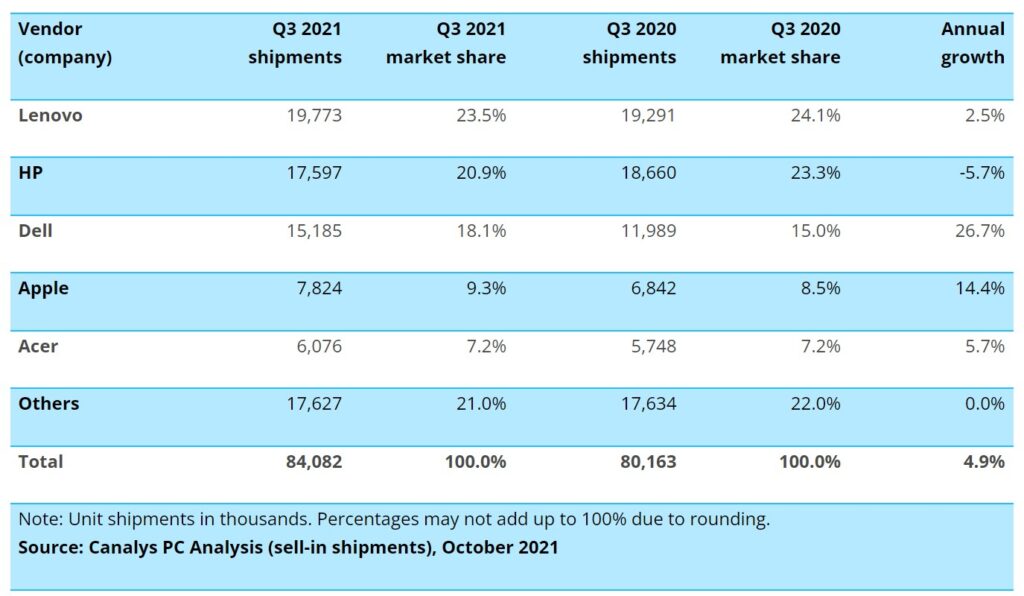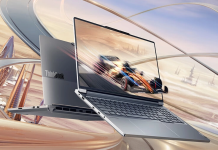Global PC sales oversaw a 5 percent growth in shipments during the July-September period (Q3) in 2021, which is a major drop following five quarters of double-digit growth, thanks to the crippling semiconductor shortage.
As per a market research by Canalys (via: Gadgets 360), Lenovo enjoyed the highest share of the global PC shipments with HP following closely. Next in line were Dell, Apple, and Acer, in order, completing the top 5 rankings.

Total shipments of desktops and notebooks including workstations stood at 84.1 during Q3 2021. The numbers could have been much higher owing to unusually high demand had the supply not been bottlenecked by supply chain disruptions.
Since the outbreak of the pandemic, the PC sector has witnessed a 9 percent compound annual growth rate (CAGR), and the deficit in the supply of PCs is likely to extend well into 2022. Canalys reports that manufacturers will not be able to meet the spike in demand with the upcoming holidays.
As per figures, notebook and mobile workstation sales grew 3 percent YoY to hit 67.4 million units, while desktops recorded an even higher growth rate of 12 percent with sales over 16.6 million units. The surge in demand can be explained by the COVID-19 lockdowns that have promoted remote work.

However, it is Lenovo that has outshined competition and has been the largest contributor to PC shipments in Q3 2021, selling over 19.77 units for a modest increase of 2.5% year-on-year. The Chinese company’s market share stood at 20.9% during the same period.
Closely following is HP clocking a 20.9% market share despite a 5.7% annual decline compared to last year’s figures. Units sold stood at 17.597 million.
Third in line is Dell with 15.18 million shipments. However, the company actually tops the list when it comes to annual growth, bagging an impressive 26.7% figure.
Finally, in the top 5, Apple and Acer both had annual growth rates of 14.4% and 5.7 percent, respectively. The former had a 9.3% market share with 7,824 units shipped, while the latter had a 7.2 percent market share with 6,076 units sent.
RELATED:







